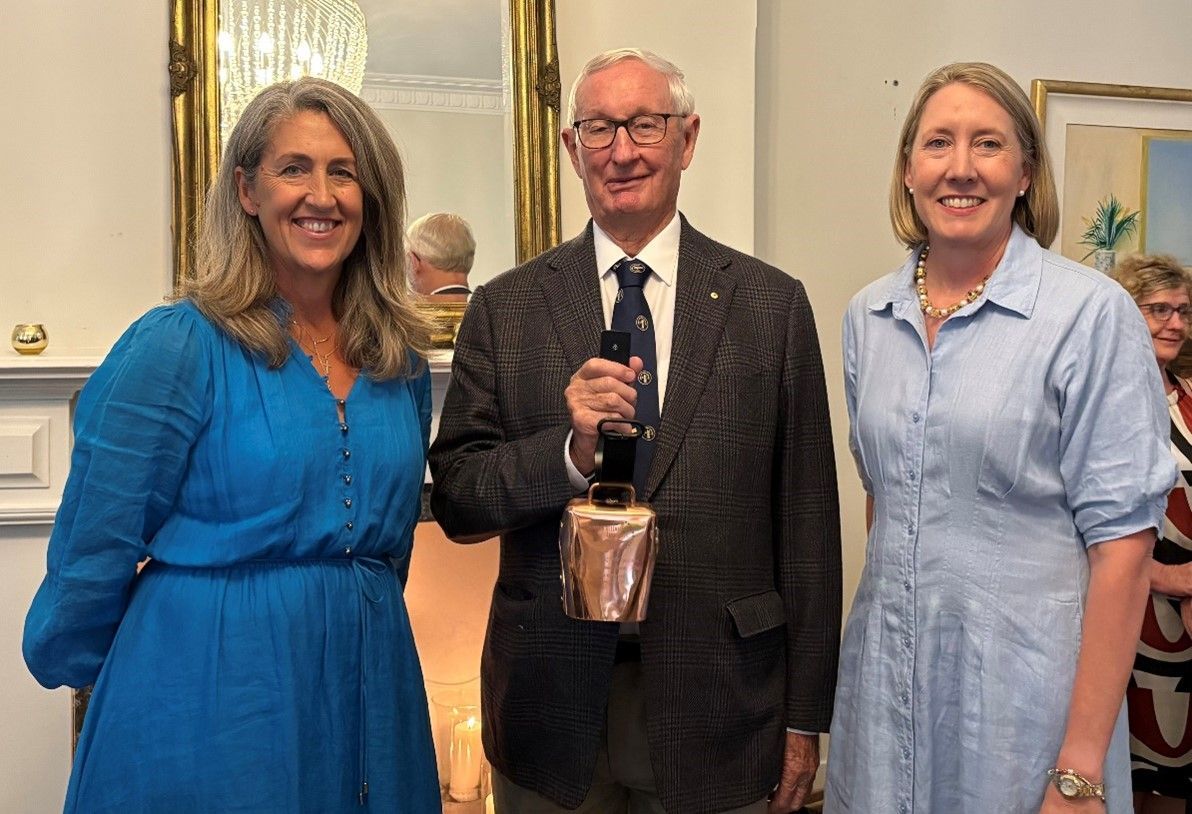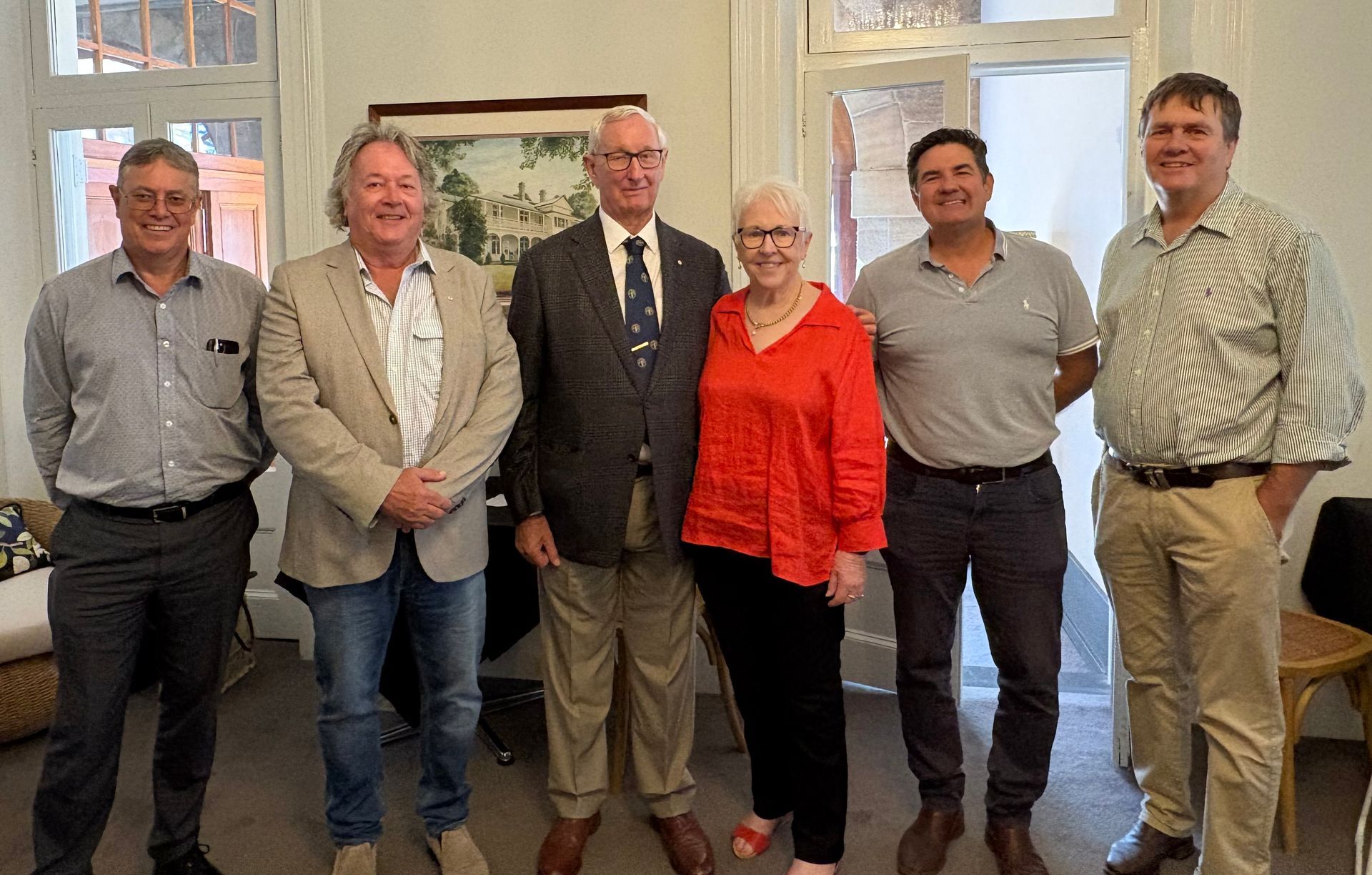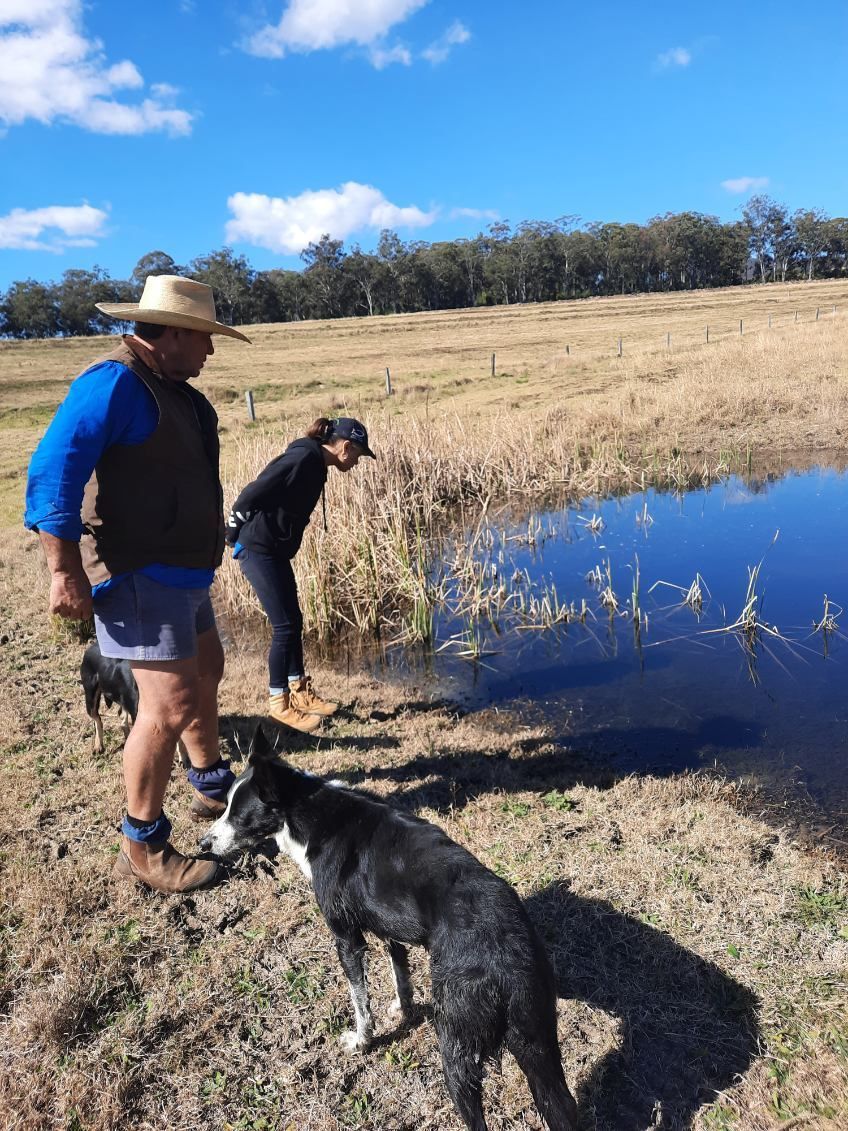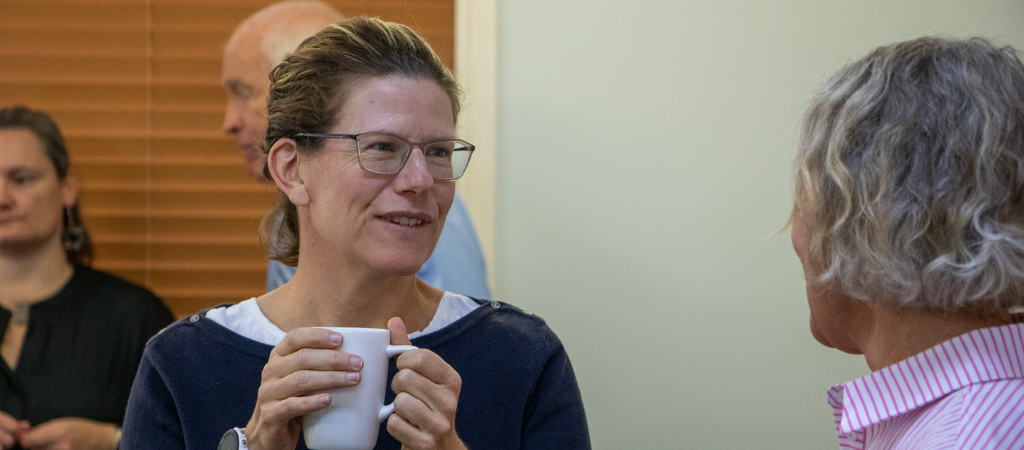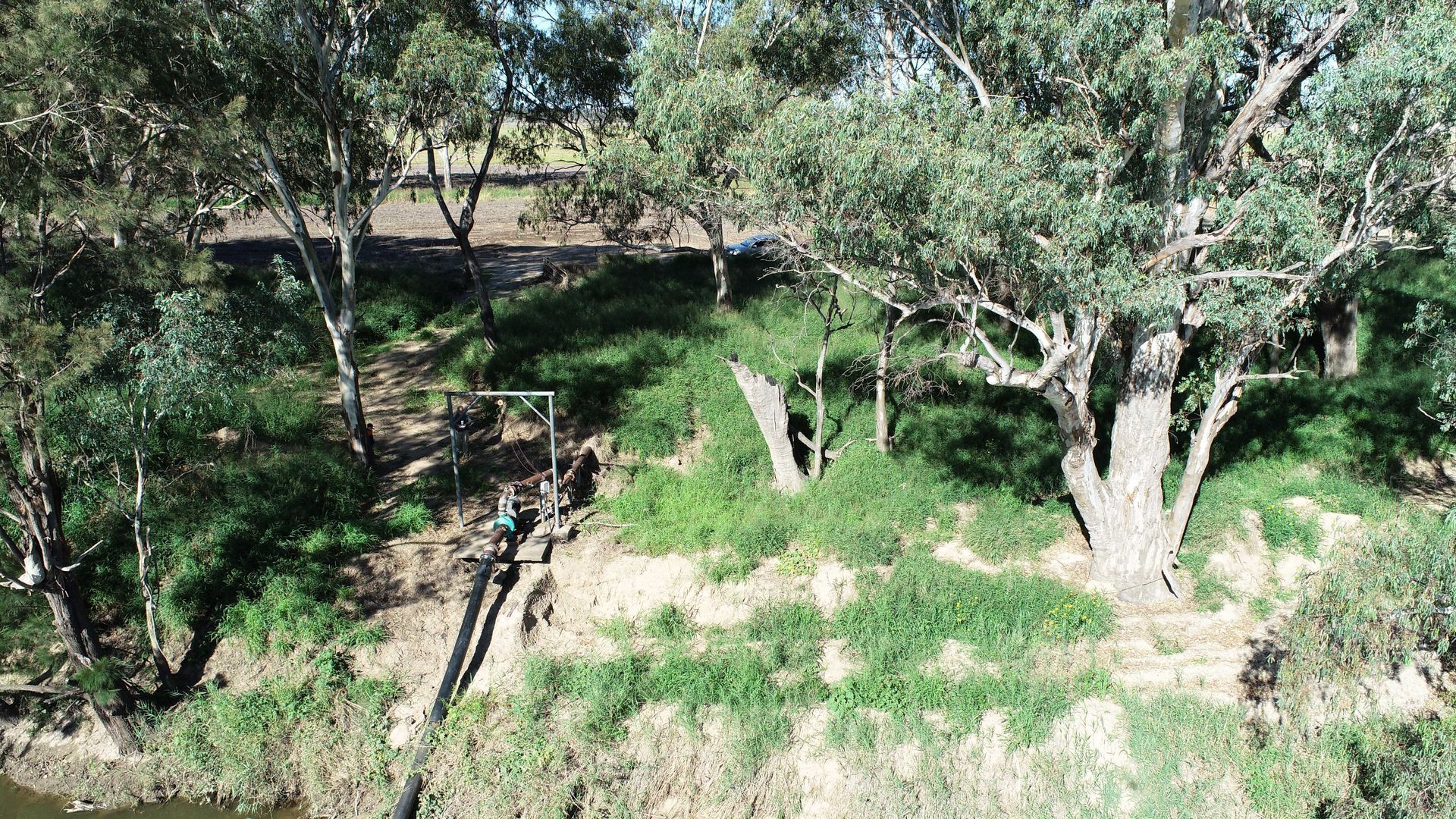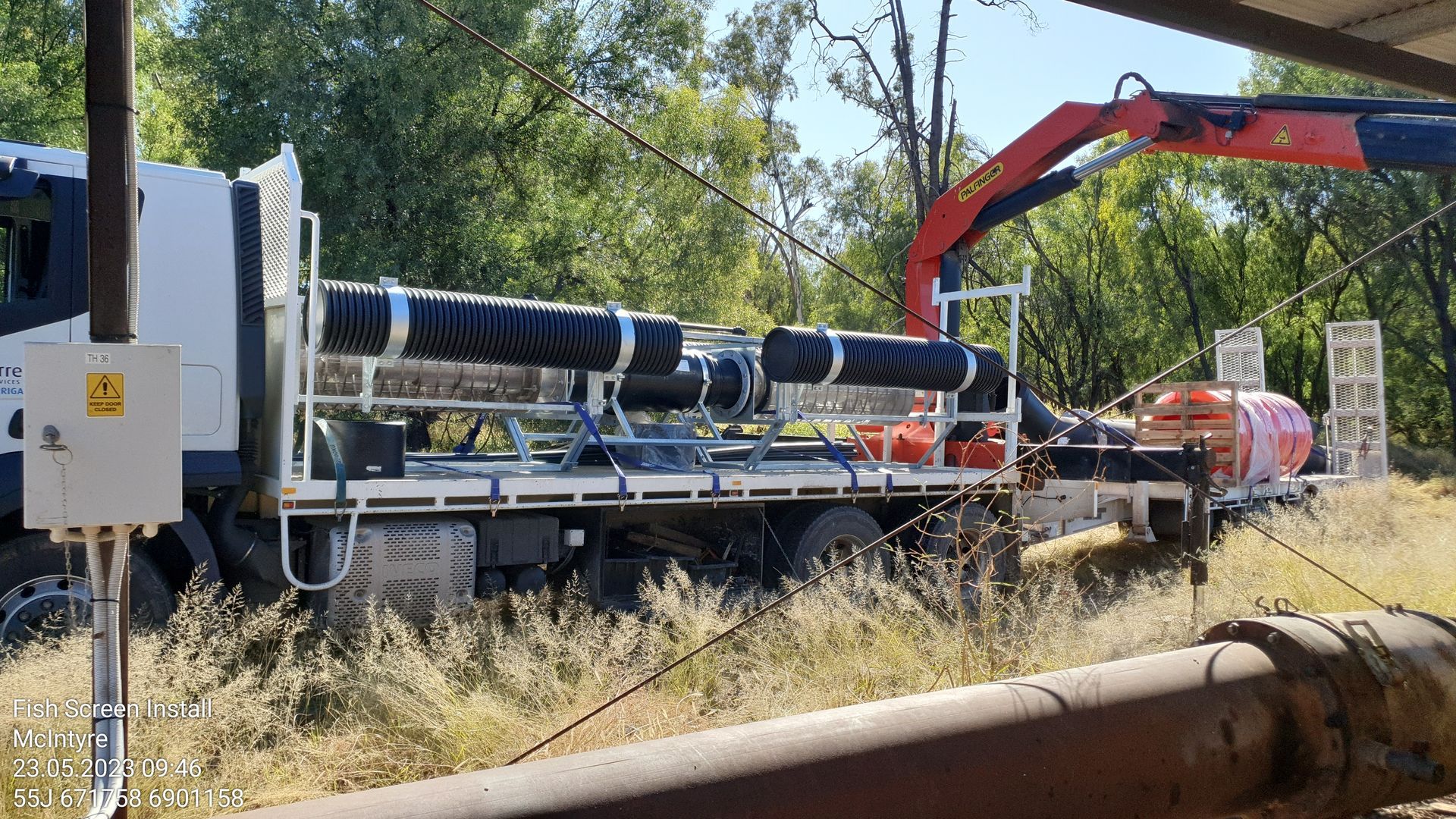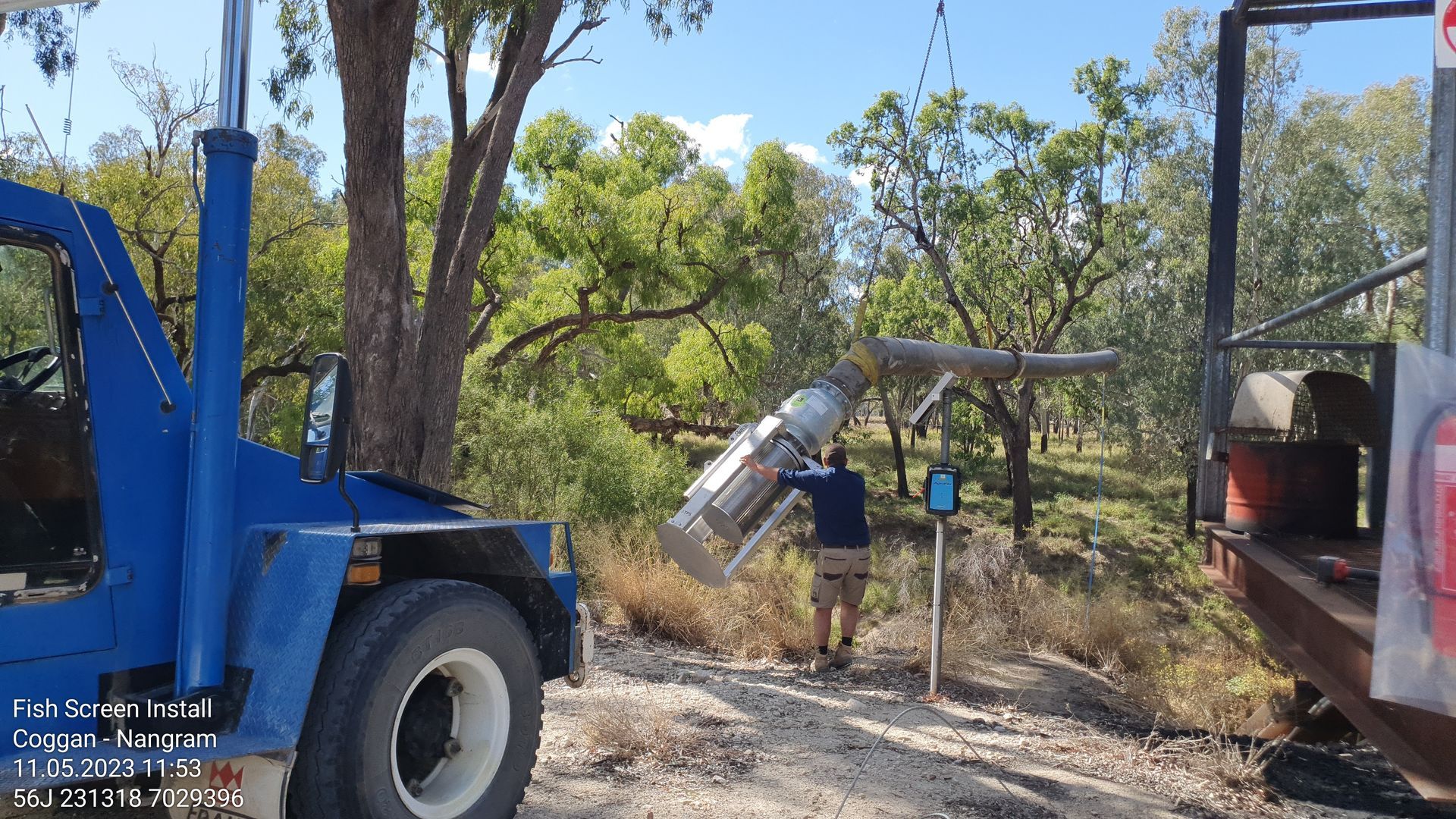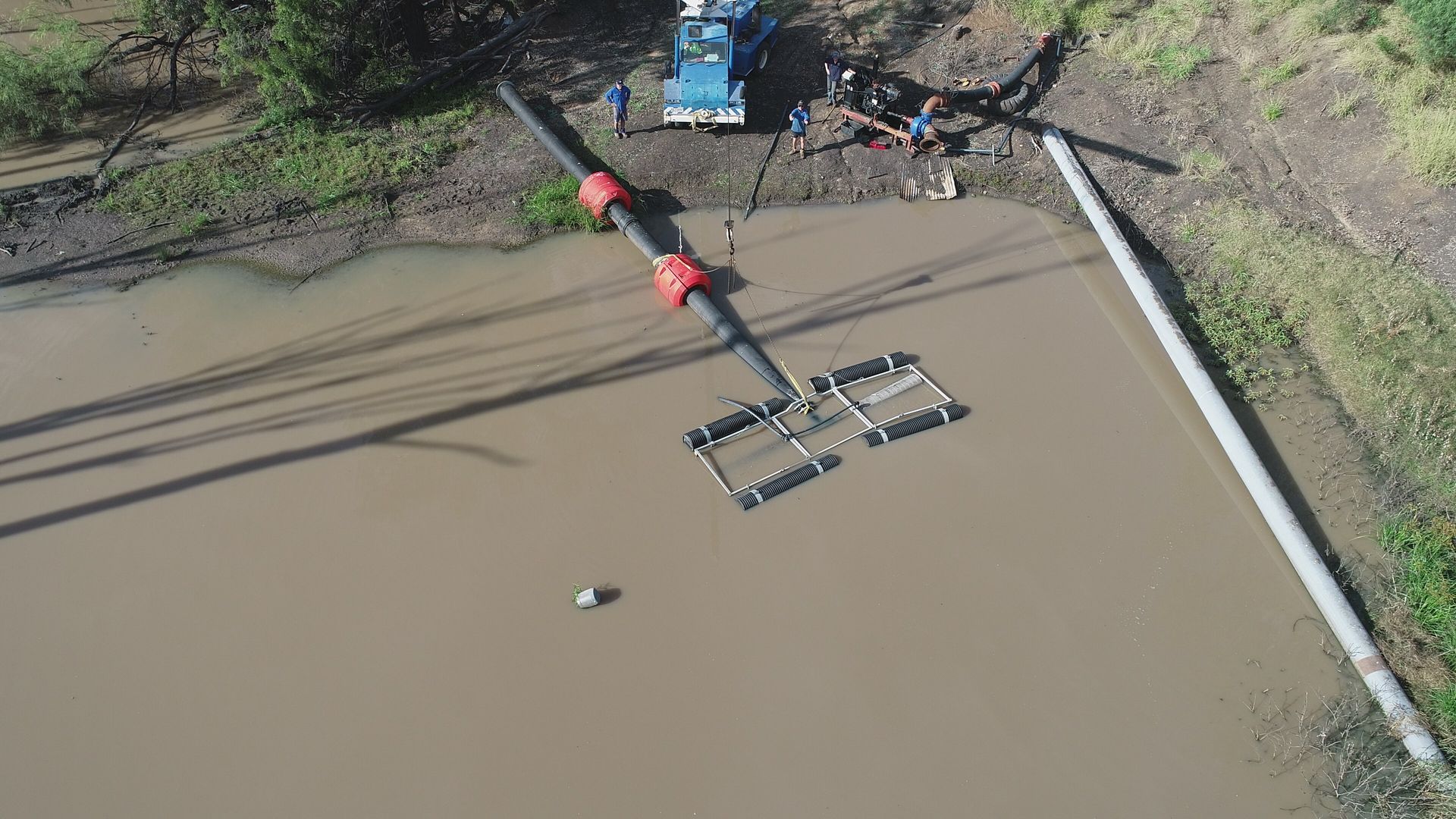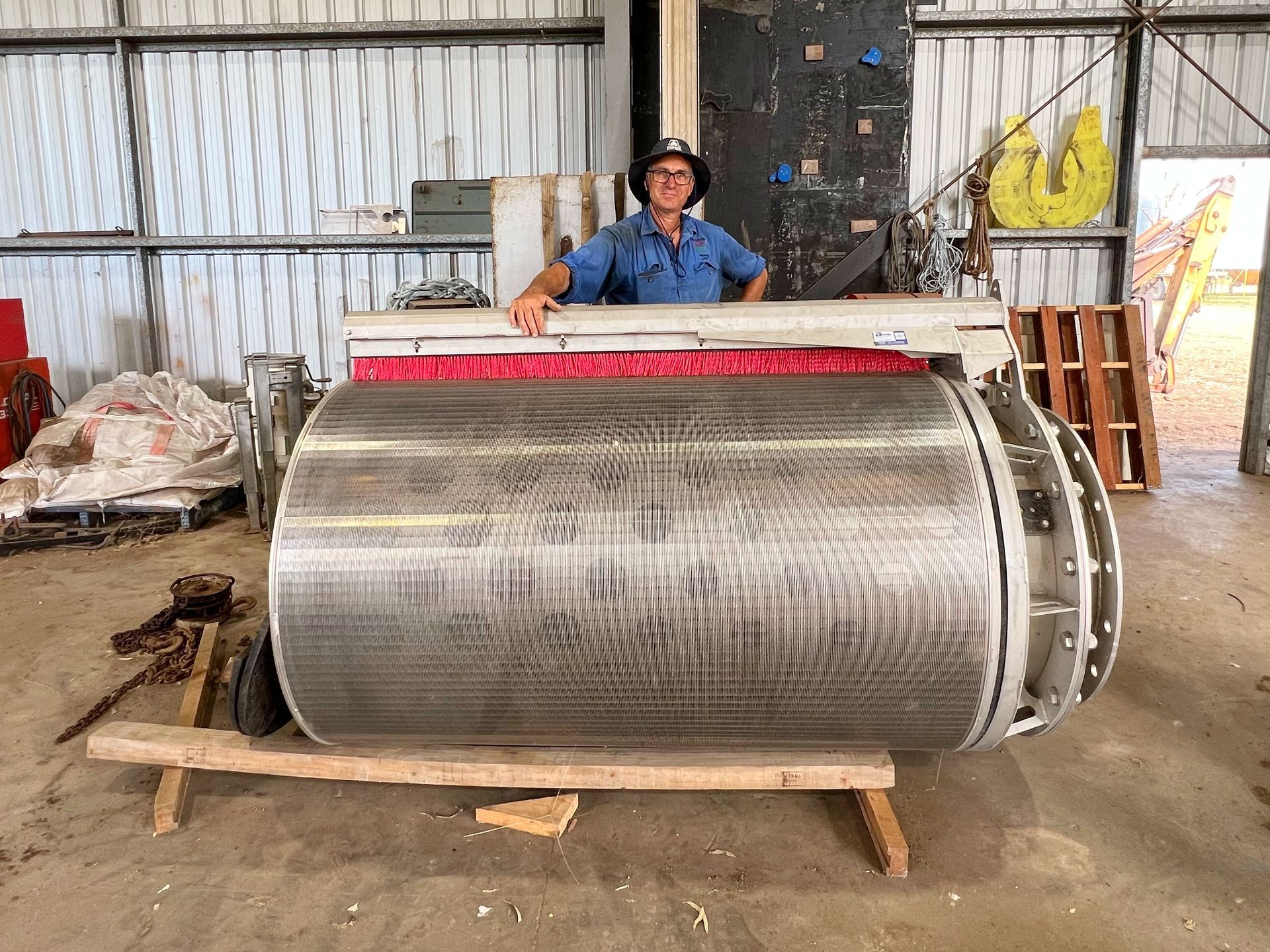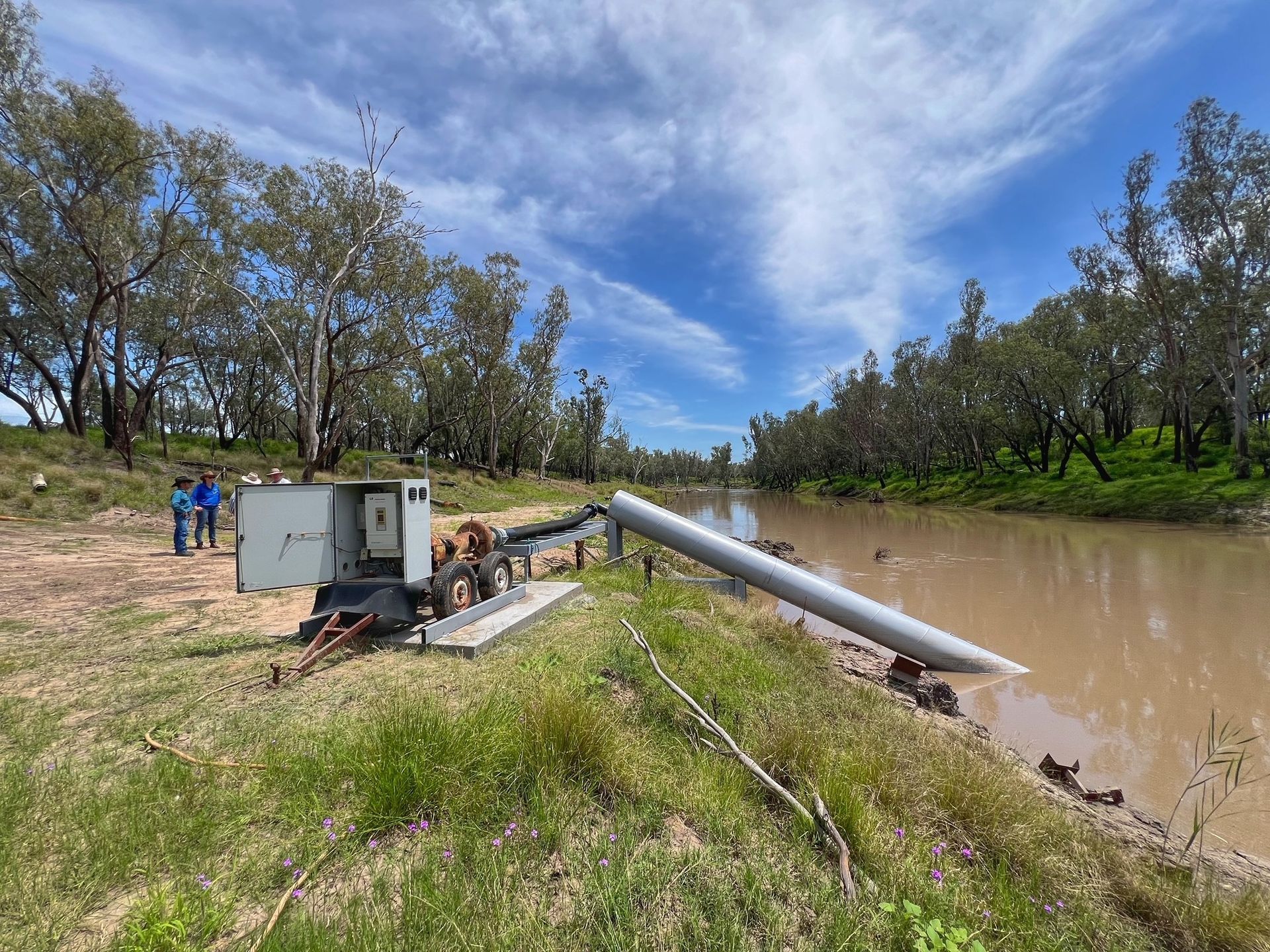“To heal Country we have to heal ourselves.”
That’s the advice from Oakey based Aboriginal artist Damon Miri Anderson as he paints his entry into Southern Queensland Landscapes’ inaugural First Nations’ Art Competition.
With less than 8 weeks until entries close; the Wakka Wakka, Gomeroi and Kulilli artist said he’s excited to share the story of his people through his painting and encourages other artists throughout the region to also enter and celebrate culture and Country.
“My painting is representing me and my connection to my totems,” Damon Miri Anderson said.
“The totems create balance on the landscape, and my three totems, Bunya nuts, Gabul (snake) and Kutgi (sand goanna), are important to me and my culture, so I wanted to paint them for my submission,” Mr Anderson said.

Artist Damon Miri Anderson is putting the finishing touches on his painting.
“I have always done painting. Ever since I was a kid, I would watch my uncle paint and he inspired me. I was also inspired by all the stories that the art is based on,” he said.
This is the first year SQ Landscapes has hosted the event and Mr Anderson said the theme ‘Heal Country’ was significant to him and his culture.
“To Heal Country, we have to heal ourselves. The best medicine for Aboriginal people is being on Country, sitting on a riverbank, listening to the water flow by and listening to the sounds of the animals,” Mr Anderson said.
“I have always been connected to my culture. But my parents and aunties and uncles were not always, because back then it was still shameful to be an Aboriginal person, and there was still a lot of stigma around it,” he said.
Recalling his childhood, Mr Anderson said he learnt a lot about his culture from his grandmother.
“My grandmother was a bit secretive and protective of her stories and she wouldn't tell my aunties or family members, and they would always ask about the stories and she would say why’d ya wanna know that for?” Mr Anderson said.
“But I started hanging out with mob from North Stradbroke Island (Nunukul, Quandamooka) and learning from them, their stories, their dances and their language. And I would come home and I'd tell my grandmother about what I'd be doing. I’d ask her about the similarities in the language and she’d agree with me. She knew the language,” he said.
“So she saw that I had an interest in it, and then she started teaching me her songs, her language and her stories - and it was special because no one else got to hear them. So when I would sing, she would follow along with the words in language and everyone would be shocked and say how does he get to know that?!”
The First Nations’ Art Competition is open to artists who identify as First People’s from the 28 Nations in the SQ Landscapes region; which stretches from Toowoomba west to Charleville, north to Tambo and south to the New South Wales border.
There’s more than $8,000 in prizes to be won and Mr Anderson said he encourages Aboriginal people thinking about entering to ‘just give it a go’.
“I know heaps of Aboriginal artists who feel shame about their art and don't think they are good enough,” Mr Anderson said.
“But it's not about being good at the art, it's about the story that’s behind it and the main way for communication for Aboriginal people is through their art” he said.
Artists can enter now until the 22nd April 2022 via
https://www.sqlandscapes.org.au/first-nations-art-competition or by calling 07 4621 1011.
